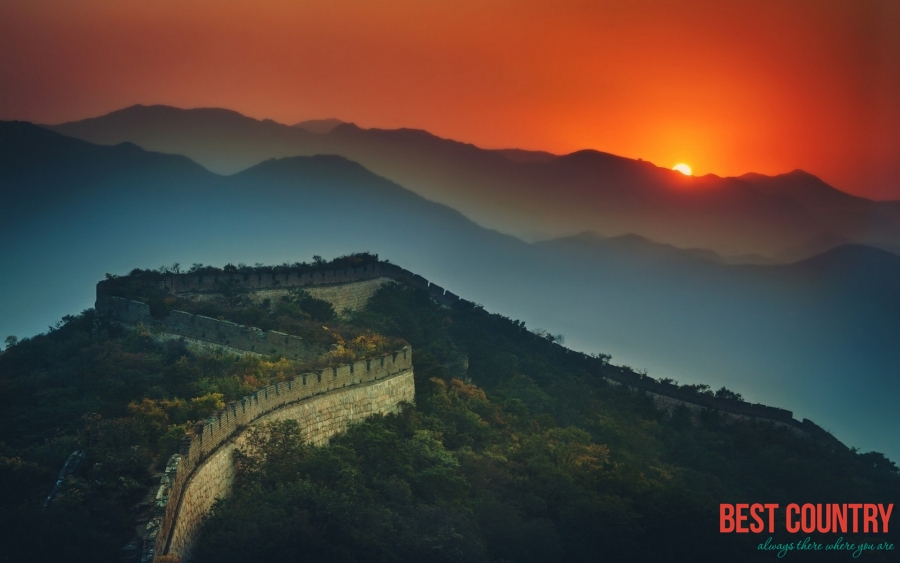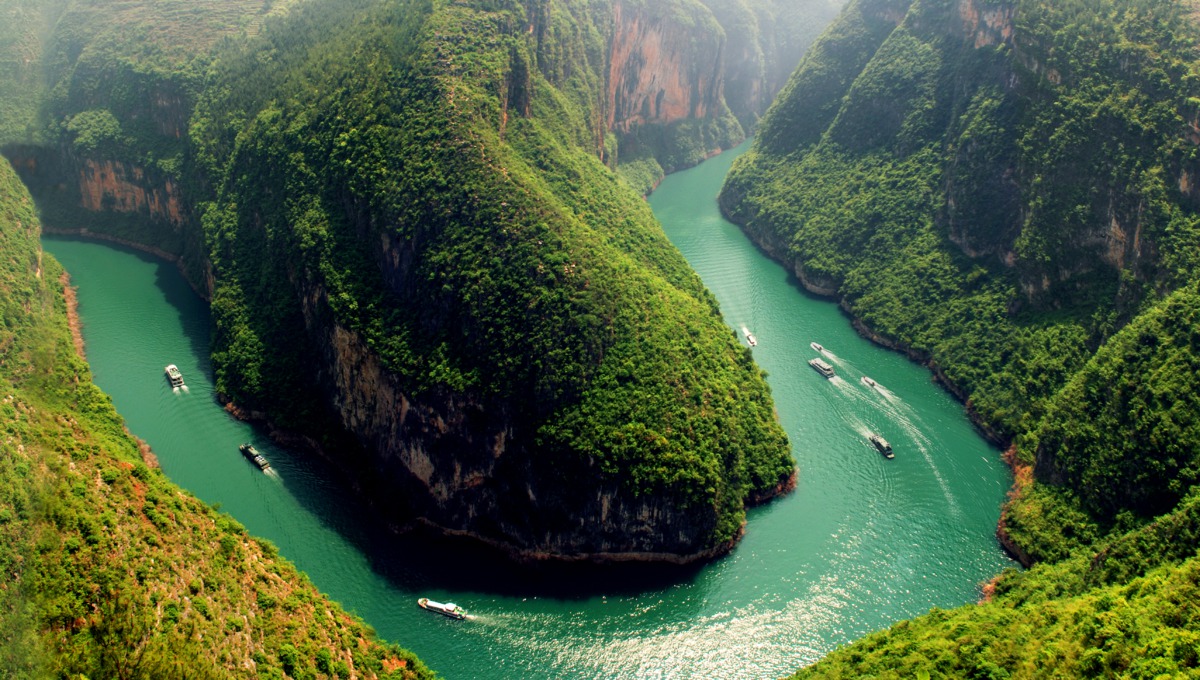Climate of China

China has a climate dominated by dry seasons and wet monsoons, which leads to clear temperature differences in winter and summer. In winter, northern winds coming from high latitude areas are cold and dry; in summer, southern winds from sea areas at lower latitude are warm and moist.
China climates differ from region to region because of the country's extensive and complex topography. In the south of the Nanling Mountains, rains are prolific and the temperature is high all year round. In the Yangtze and Huaihe river valleys in the central part of China, there are four distinctive seasons.
In northeast China, summer is short but there is much sunshine, while winter is long and cold. Precipitation is limited in northwest China where it is cold in winter and hot in summer. In southwest China of low latitudes, the land is elevated high, and has characteristically vertical seasonal zones.
There's not really an 'ideal' time to visit the country, so use the following information as a rough guide to avoid temperature extremes.
North
Northern winters, from December to March, can be extremely cold. Beijing may experience temperature of -20C at night, dry and no sun. Further north, -40C are not uncommon, and you'll see the curious sight of sand dunes covered in snow.
During the summer, from May to August, temperatures in Beijing can hit 38C (100F), coinciding with the rainy season for the city.
The best time for visiting the north is spring and autumn. Daytime temperatures range from 20C to 30C (68F to 86F) and drop a lot at night. Precipitation is 6370cm (25-28 inches) per year.
Central
 The Yangtze River valley has long and humid summer with high temperatures from April to October. The city of Wuhan, Chongqing and Nanjing on the Yangtze are China's three famous 'furnaces'.
The Yangtze River valley has long and humid summer with high temperatures from April to October. The city of Wuhan, Chongqing and Nanjing on the Yangtze are China's three famous 'furnaces'.
Winters there, with temperatures dropping well below freezing, can be as cold as in Beijing, particularly as there is no heating in public buildings to the south of the Yangtze River.
It can also be wet and miserable at any time apart from summer. Since it is impossible to choose an ideal time to visit, spring and autumn are probably best. Precipitation averages around 76 cm (30 inches) per year.
South
Near Guangzhou, the summer is a season of typhoons between July and September. Temperatures can rise to around 38C. Winters are short, between January and March. It's not as cold as in the north, but you'd better bring warm clothes with you while visiting.
Autumn and spring can be good times to visit, with day temperatures in the 20C to 25C (68F to 75F) range. Sometimes, it can be miserably wet and cold, with rain or drizzle. Precipitation averages 76 cm (30 inches) per year.
Northwest
It gets hot in summer, dry and sunny. The desert regions can be scorching in the daytime. Turphan, which sits in a depression 150m below sea level, is referred to as the 'hottest place in China' with maximums of around 47C.
In winter this region is as severely cold as the rest of northern China. Temperatures in Turphan during Winter are only slightly more favorable to human existence.
This area of China climate experiences little rain, and as a consequence, the air is very dry. Summers, however, can exceed 40C, while winters may drop to -10C. Precipitation averages less than 10 cm (4 inches) per year.